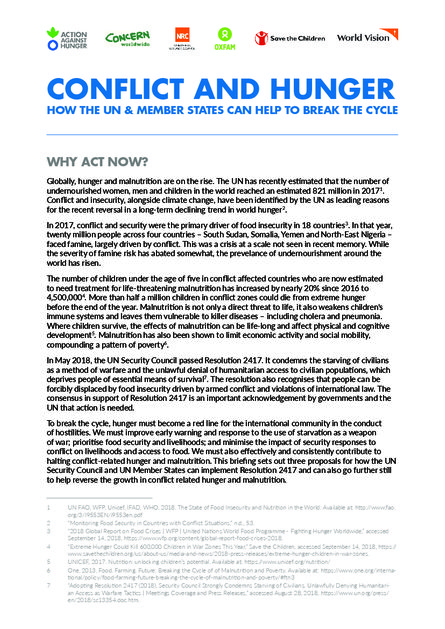
In 2017, the number of people in the world suffering from hunger has increased for the third year in a row, according to the United Nations, to 821 million people. After years of progress, conflict has contributed to global hunger numbers rising to levels last seen a decade ago.
75 percent of the world’s malnourished people live in conflict zones and 492 million people are in need of urgent humanitarian aid. War destroys markets and livelihoods, drives mass population displacement, and causes increased risk of acute malnutrition. Attacks on civilians and humanitarian workers, as well as infrastructure to support the delivery of aid, clean water, health, and livelihoods, are increasing.
Without immediate and joint action by governments and the international community, the goal of eradicating hunger by 2030 will not be possible. The links between conflict and hunger were recognized by the UN Security Council in May 2018, when the Council unanimously voted in support of Resolution 2417. This landmark resolution to prevent and eradicate conflict-induced hunger must now be implemented.
In a briefing paper, humanitarian organizations Action Against Hunger, Concern, Norweigan Refugee Council, Oxfam, Save the Children, and World Vision outline recommendations to operationalize Resolution 2417 and to break the cycle of hunger and conflict.
